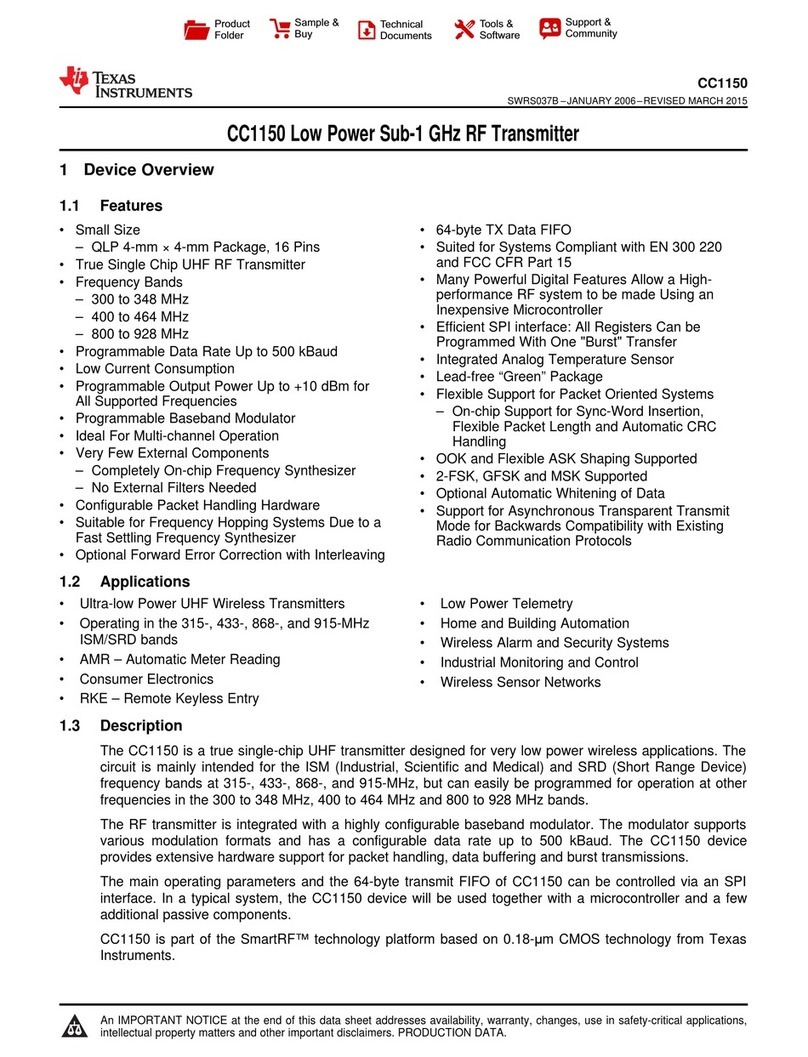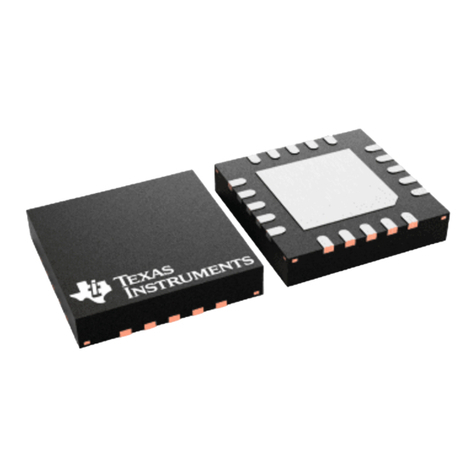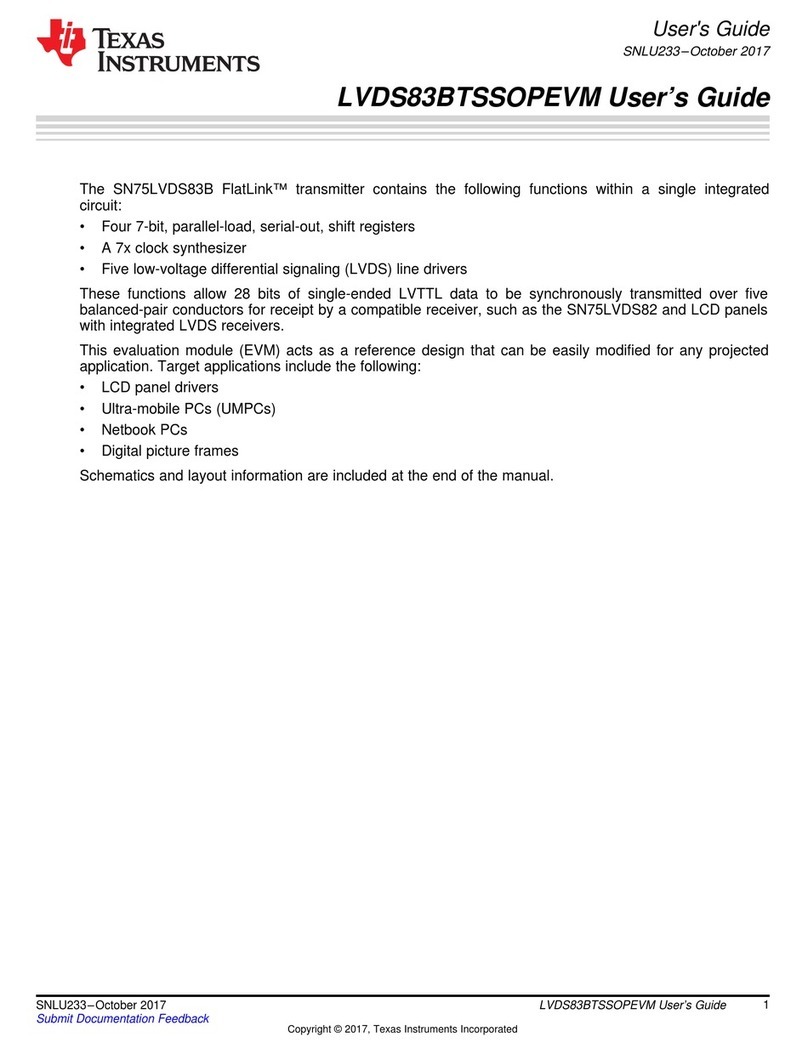
CC112X/CC1175
SWRU295C Page 3 of 108
Table of Contents
ABBREVIATIONS...............................................................................................................................................2
TABLE OF CONTENTS.....................................................................................................................................3
1OVERVIEW..............................................................................................................................................5
2CONFIGURATION SOFTWARE..........................................................................................................6
3MICROCONTROLLER INTERFACE .................................................................................................7
3.1 CONFIGURATION .........................................................................................................................................7
3.2 SPI ACCESS TYPES....................................................................................................................................10
3.3 OPTIONAL PIN CTRL RADIO CONTROL FEATURE ....................................................................................18
3.4 GENERAL PURPOSE INPUT/OUTPUT CONTROL PINS ..................................................................................18
4COMMON RECEIVE AND TRANSMIT CONFIGURATIONS......................................................24
4.1 MODULATION FORMATS............................................................................................................................24
4.2 DATA RATE PROGRAMMING......................................................................................................................29
5RECEIVE CONFIGURATION ............................................................................................................30
5.1 RX FILTER BANDWIDTH............................................................................................................................30
5.2 DC OFFSET REMOVAL...............................................................................................................................31
5.3 AUTOMATIC GAIN CONTROL.....................................................................................................................31
5.4 IMAGE COMPENSATION .............................................................................................................................32
5.5 BIT SYNCHRONIZATION.............................................................................................................................33
5.6 BYTE SYNCHRONIZATION,SYNC WORD DETECTION.................................................................................33
5.7 PREAMBLE DETECTION .............................................................................................................................34
5.8 RSSI..........................................................................................................................................................34
5.9 COLLISION DETECTOR...............................................................................................................................38
5.10 CLEAR CHANNEL ASSESSMENT (CCA) .....................................................................................................39
5.11 LISTEN BEFORE TALK (LBT) ....................................................................................................................40
5.12 LINK QUALITY INDICATOR (LQI)..............................................................................................................40
6TRANSMIT CONFIGURATION.........................................................................................................41
6.1 PA OUTPUT POWER PROGRAMMING .........................................................................................................41
6.2 OOK/ASK BIT SHAPING...........................................................................................................................41
7PACKET HANDLING HARDWARE SUPPORT..............................................................................42
7.1 STANDARD PACKET FORMAT ....................................................................................................................42
7.2 PACKET FILTERING IN RECEIVE MODE......................................................................................................48
7.3 PACKET HANDLING IN TRANSMIT MODE...................................................................................................49
7.4 PACKET HANDLING IN RECEIVE MODE .....................................................................................................49
7.5 PACKET HANDLING IN FIRMWARE.............................................................................................................49
7.6 TX FIFO AND RX FIFO............................................................................................................................50
7.7 TRANSPARENT AND SYNCHRONOUS SERIAL OPERATION ..........................................................................51
8RADIO CONTROL................................................................................................................................53
8.1 POWER-ON START-UP SEQUENCE.............................................................................................................53
8.2 CRYSTAL CONTROL...................................................................................................................................53
8.3 VOLTAGE REGULATOR CONTROL..............................................................................................................53
8.4 ACTIVE MODES .........................................................................................................................................54
8.5 RX TERMINATION .....................................................................................................................................55
8.6 ENHANCED WAKE ON RADIO (EWOR)......................................................................................................58
8.7 RX SNIFF MODE........................................................................................................................................61
8.8 RC OSCILLATOR CALIBRATION.................................................................................................................63
8.9 ANTENNA DIVERSITY AND MULTIPLE PATH TRANSMISSION....................................................................63
8.10 RANDOM NUMBER GENERATOR................................................................................................................64
8.11 FREQUENCY SYNTHESIZER CONFIGURATION.............................................................................................64
8.12 RF PROGRAMMING....................................................................................................................................64
8.13 IF PROGRAMMING .....................................................................................................................................65
8.14 FS CALIBRATION.......................................................................................................................................65
8.15 FS OUT OF LOCK DETECTION....................................................................................................................66
9SYSTEM CONSIDERATIONS AND GUIDELINES.........................................................................67
9.1 VOLTAGE REGULATORS ............................................................................................................................67
9.2 SRD REGULATIONS...................................................................................................................................67
9.3 FREQUENCY HOPPING AND MULTI-CHANNEL SYSTEMS............................................................................67






























